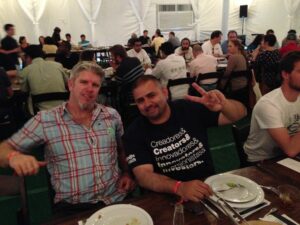Check out my latest post about Santa Barbara Startup Weekend #4 at Up Global: https://blog.up.co/2014/10/30/mobile/
Book Review of “What It Takes To Be An Entrepreneur” by Leon Presser
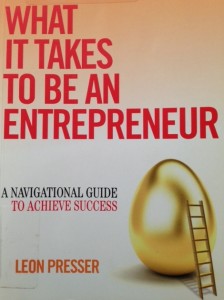 Leon Presser’s book WHAT IT TAKES TO BE AN ENTREPRENEUR: A Navigational Guide to Achieve Success is in a category that I’ll call entrepreneurial biography. In this genre the author imparts life lessons and personal learning through the telling of their own memoirs, rather than using research studies to teach best practices.
Leon Presser’s book WHAT IT TAKES TO BE AN ENTREPRENEUR: A Navigational Guide to Achieve Success is in a category that I’ll call entrepreneurial biography. In this genre the author imparts life lessons and personal learning through the telling of their own memoirs, rather than using research studies to teach best practices.
Presser is a successful businessman who started and exited several businesses. His bulleted lists of life lessons is backed up by many interesting and engaging examples, making this book a quick read.
This book is a great introduction for want-to-be entrepreneurs. My favorite part is his first chapter “Who is an Entrepreneur,” in which Presser provides his own unique take on the personal attributes required to start and successfully run a company. His 17 attributes are
- Necessity to be the master of your destiny
- Strong self-confidence
- Ability to see what others do not see
- Common sense
- Sets high goals
- Not afraid to make decisions
- Will commit
- Does not retreat
- Pride
- Willingness to accept responsibility
- Focus
- Intense dislike of bureaucracy and bureaucrats
- Inspires confidence
- Wisdom and selecting team members
- Leadership
- It is in the blood
- Not motivated by money alone
Inspired perhaps by his experience teaching at several universities, Presser completes the book with a final chapter that includes exercises and self training that readers can use to fully experience the lessons of the book for themselves.
Unlike some entrepreneurial biographies that I have read, this book is generally useful and provides a good introduction to many topics that a new entrepreneur should be aware of when embarking upon the entrepreneurial journey.
Latest Tweets from Santa Barbara Technology Companies
 Are you interested in getting the latest news from Santa Barbara Technology Companies? I am. So, I’ve created a list of SB Tech companies who have twitter accounts. Now I can see all the latest tweets from our local tech scene in one place.
Are you interested in getting the latest news from Santa Barbara Technology Companies? I am. So, I’ve created a list of SB Tech companies who have twitter accounts. Now I can see all the latest tweets from our local tech scene in one place.
Let me know if your favorite tech or startup company is not represented on the list. Just send or tweet me (@rongans) their twitter handle and I’ll be happy to add them.
To those tech companies who don’t have twitter accounts, what are you waiting for? You are a tech company after all.
And to meet all sorts of interesting people in town, be sure to check out my blog entry on Santa Barbara Networking Groups.
SB Startup Weekend #3 Highlights
As we prepare to unleash Santa Barbara Startup Weekend #4, we’ve taken a moment to review the Highlights of Santa Barbara Startup Weekend #3.
Are you ready for #4?
11 Secrets of Leadership
I was invited to blog on LinkedIn. See my first post The 11 Secrets of Leadership. What do you think of LinkedIn as a blogging platform? Does it capture your interest?
Link
How do you put an encyclopedia containing 22 books and over 13,000 pages of material online? Well, first you get permission from the publishers, then you gather up the books, then you scan all the pages, then OCR, and then you figure out how you want to publish and present it. To see a work in progress, visit the Biology of the Reptilia online.
Santa Barbara Makes Waves in Global Startup Community
Team Santa Barbara returned from Las Vegas and this year’s UP Summit with some great news to share. But before I break that bombshell, I hear you asking “Up What?”
UP Summit
UP Summit is self-described as the “largest grassroots gathering of startup Community Leaders from across the planet.” It is the annual global leadership conference of UP Global, a merger of Startup Weekend and Startup America.
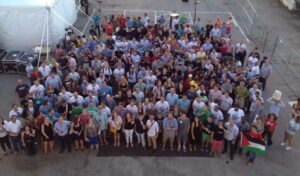
UP Summit Community leaders gathering before dinner
UP Global currently engages over 300,000 entrepreneurs in 500+ cities across 126 countries. Their goal by 2016 is 500,000 entrepreneurs in 1000 startup communities.
This year’s UP Summit, held in Las Vegas, brought together over 500 community organizers, volunteers, and UP Global staff who support the four major initiatives of UP Global:
- Startup Weekend
- Startup Next
- Startup Digest
- Startup Education
UP Global Programs
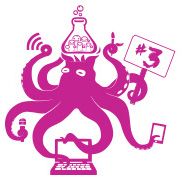 The Startup Weekend weekend program has been held three times so far in Santa Barbara, as well as in neighboring cities such as Santa Maria and San Luis Obispo. It brings together entrepreneurs for 54 hours to pitch an idea, form a team, and create a startup company from scratch. Startup Next, as its name implies, takes Startup Weekend or other fledgling companies to the next level of growth.
The Startup Weekend weekend program has been held three times so far in Santa Barbara, as well as in neighboring cities such as Santa Maria and San Luis Obispo. It brings together entrepreneurs for 54 hours to pitch an idea, form a team, and create a startup company from scratch. Startup Next, as its name implies, takes Startup Weekend or other fledgling companies to the next level of growth.
Startup Digest is a weekly curated email listing and calendar of the most relevant startup news in a local community. You can sign up for the Santa Barbara Startup Digest. Startup Education is a program to support startups specifically in the education vertical.
The UP Summit Experience
The goals of UP Summit were to bring together a diverse group of community leaders who all share the commonality of organizing their local startup communities. Rather than the formal lecture format you might expect in an ordinary conference, the summit was designed to provide many opportunities for meeting people, networking, sharing ideas, group discussions, and learning.
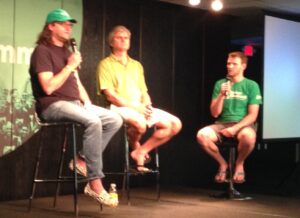
Marc Nager, Brad Feld, and Steve Case hold a “fireside chat”.
Activities included “fireside chats”, short lectures with lots of discussion, meals together in many different combinations and configurations, and fun events such as indoor skydiving, driving a bulldozer, and zip lining.
We also pulled out some tricks from the entrepreneurial community, such as Ignite, a series of presentations, each exactly 5-minutes long, containing 20 slides for exactly 15 seconds each.
Major speakers included Steve Case, Cofounder of AOL, Marc Nager, CEO of UP Global, and Brad Feld, author of Startup Communities: Building an Entrepreneurial Ecosystem in Your City.
The Big News
Santa Barbara was represented by five of our Startup Weekend and Startup Digest leaders: Kyle Ashby, Jose Huitron, Laura Fagundes, Jim McGaw, and Ron Gans. We went with the goal of bringing back knowledge and contacts for our local startup community as well as raising awareness of Santa Barbara on the national and global scene. And that we did …
We are happy to announce that Santa Barbara will be hosting the Southwest USA Regional UpSummit conference in January 2015. This will bring in community leaders from a half dozen states in the region and provide national and international attention for Santa Barbara’s entrepreneurs, startup companies, and startup successes.
We are excited to have the opportunity to show off our local and regional community and bring national attention and business into our area.
The Biggest Risk After Startup Weekend
Startup Weekend is a wonderful opportunity to meet people, pitch an idea, get instant crowd feedback on your idea, and spend 54 hours validating your business and idea while learning from experts and mentors about starting a company. This makes it an excellent forum for first-time entrepreneurs and other enthusiastic but inexperienced people to get a jump start on entrepreneurship.
 The flip side of this is that your Startup Weekend team will likely consist of 3-7 first-time entrepreneurs, students, job hunters, another other enthusiastic but inexperienced people. So, whether you have won a prize or just had a great weekend experience, you are going to find yourself monday morning with a large team of relative strangers who consider themselves founders but also probably have day jobs, family commitments, an overlapping set of skills, and a noticeable lack of experience.
The flip side of this is that your Startup Weekend team will likely consist of 3-7 first-time entrepreneurs, students, job hunters, another other enthusiastic but inexperienced people. So, whether you have won a prize or just had a great weekend experience, you are going to find yourself monday morning with a large team of relative strangers who consider themselves founders but also probably have day jobs, family commitments, an overlapping set of skills, and a noticeable lack of experience.
If you are serious about moving forward with your startup idea, the biggest risk is ignoring the inherent issues within your team. Step back and think about how you would have formed a startup team if you had not attended Startup Weekend. Most likely you would have
- Evaluated your own skills and abilities and identified gaps you need to fill.
- Decided whether or not you need a team or want to go it alone.
- Looked for individuals you have a professional or networking relationship with, or who you find through a direct search, who meet the specific needs you identified.
- Negotiated equity with those individuals based on many factors, such as what they bring to the table, their level of commitment, and their previous (particularly startup) experience.
But look at how you actually did form your startup team:
- People who thought your idea was cool gravitated towards you.
- You probably said “sure we could use another designer/developer/business person”.
- The more the merrier. There was no reason not to include any particular team member.
- The good news is that you had one weekend of intense interviewing to evaluate the members of your team. You probably have a pretty good idea who to jettison and who has potential.
The biggest risk to your startup is to accept the team you have, divide up equity equally on a handshake, and jump right in.
Rather than taking the approach of starting with your current team and dealing with removing people (always a challenge), change your mindset back to the non-Startup Weekend approach. Assume you are a team of one. Then start building your post-weekend team using people who worked with you over the weekend, mentors and experts you met along the way, and other people who fill in specific needs in the company.
Keep the team as small as possible while covering the three critical areas. Ensure that the people you ask to join your team are ready to commit at a level you are comfortable with. Have the difficult conversations up front about roles, equity split (or how it will be decided later), and expectations.
Good Luck!
Image courtesy of Stuart Miles / FreeDigitalPhotos.net.
3 Critical Roles in a Startup Team
What does a startup need to do to succeed? The most important thing is to have the right people involved and leading the startup team. But having good people is not enough. You need to have the right mix of people.
There are three critical roles:
Every team needs the idea person. Unlike the “entrepreneur” who’s just waiting for his great idea to appear, this person is plagued with too many ideas all the time. The tough thing for them is sifting through these ideas to figure out which ones have business potential. Don’t be fooled into thinking that you just need one great idea to start a business. The business continuously needs new ideas, changes, and improvements in order to grow.
No we are not talking about stocks and bonds. This is a person who understands the market, understands customers, and closes sales. They drive sales of your MVP into paying customers hands. They figure out what the market wants and what it doesn’t want and feeds that information back into the company. They are the reality check. Do we have something of value here?
We have an idea, and we have shown that the market will buy it. But for a product to catch on, it needs to work. It needs to look good, do what it claims to do, and deliver value. It needs to be delivered in a reasonable time, and not bankrupt the company with the cost to build, deliver, and maintain it. And you need to be able to track customers, accept payments, deliver solutions, and provide support. The builder enables all of this, making sure the company has enough structure to succeed but not so much that it gets strangled.
Of course it is possible that two of these roles will be played by the same person. The market maker might be a visionary or a builder. It is rare that the visionary is a builder, although they may think they are.
Does your team have all of these roles? If not, how are you going to plug that gap?
Visionary Image courtesy of AKARAKINGDOMS / FreeDigitalPhotos.net. Market Maker/Builder Images courtesy of digitalart / FreeDigitalPhotos.net.
Santa Barbara Startup Weekend #3 Winners
Congratulations to the Santa Barbara Startup Weekend winners:
First Place
Next Mover
Second Place
Gear Up
Best Physical Product
Touchstone
Most CrowdFundable
Touchstone
Most Hustle
My Custom Cookie
Crowd Favorite
My Parking Spot
